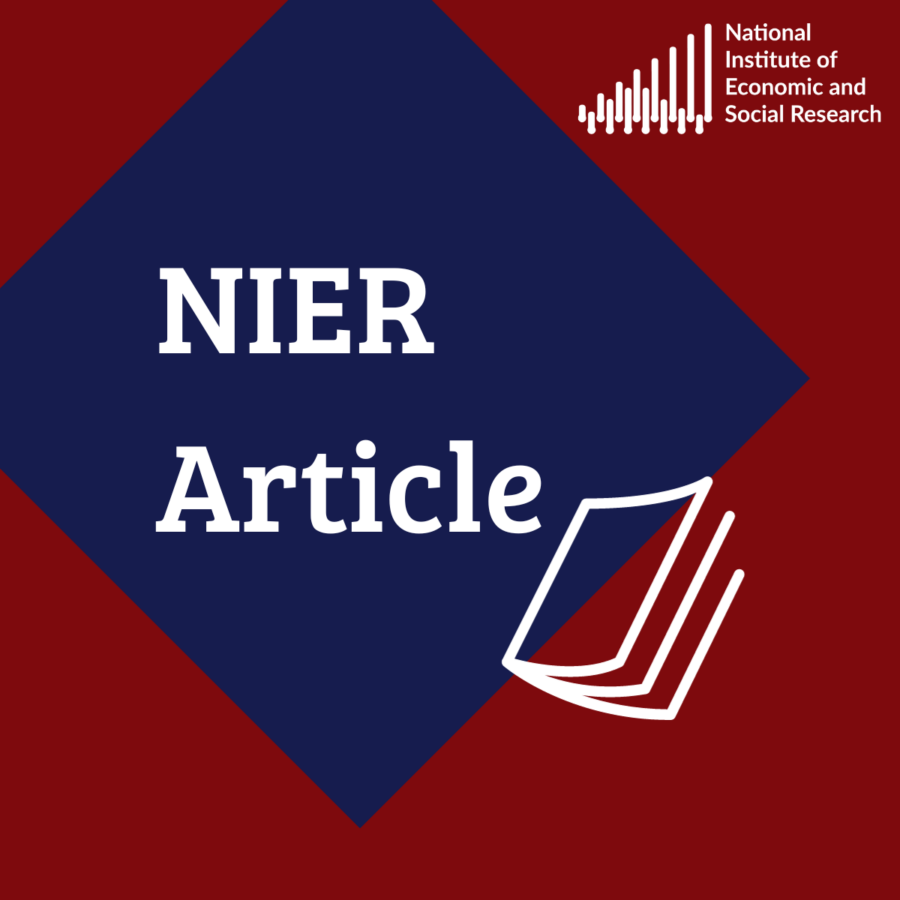Financial regulation and commercial protection: should policy change?
 Pub. Date
Pub. Date
 Pub. Type
Pub. Type

Introduction
When protection is discussed people normally have policies designed to restrict imports in mind. But the way in which the international economy has been affected by toxic financial assets issued in the United States suggests that countries might face problems not only because of the goods and services trade but also because of the financial assets they import. Thus, in discussing the case for protection, we consider first whether there is a case for protection to prevent economies importing some types of financial instrument and, secondly, whether there is a case for more traditional protection as a way of resolving the global imbalances of the world economy.
Product regulation and financial protectionism
Financial complexity leads to the production of financial products that are harmful, and the case for regulating and restricting potentially damaging financial products is no different from that for goods. Given that Americans seem to have a preference for risky activities, and also because of their bankruptcy laws, they can produce financial products different from anything produced in Europe. It would be wise to allow the use of complex products outside their domain of issue only once they had been fully stress tested in downturns, and even then it may be easier to allow European financial institutions (and others) to hold as many non-European non-financial corporate and government bonds and non-financial system equities as they wish, but to restrict them to these products, along with more complex, but tested products produced within the single market for financial services in Europe. Toxicity would be contained within the domain of the home regulator.
Financial protection before 2008 would almost certainly have led to a reduction in the US current account deficit, as the costs of risky loans in the US would have been higher than they were and hence fewer of them would have been issued. If the excess deficit was a cause of crisis, its reduction through financial regulation would have reduced the risks of a crisis.
Commercial protection and the US deficit
The United States had an external deficit of 4.9 per cent of GDP in 2008 after 6 per cent of GDP in 2006. It had fallen to 3 per cent of GDP by the fourth quarter of 2009. Nevertheless we expect there to be increased pressure for protection, particularly against Chinese imports because the deficit against China accounts for a large proportion of the total deficit and with high unemployment there will be widespread complaints that jobs are being lost to unfairly competitive Chinese imports. The standard arguments that tariffs reduce welfare are likely to be lost from view.
But could a plausible tariff make a substantial impact in global imbalances? In 2008 the United States ran an overall external deficit of US$840bn on merchandise trade but a surplus on trade in services, giving an overall deficit of US$696bn. In the first eleven months of 2009 the goods deficit was US$469 billion. The deficit with China accounted for nearly 45 per cent of this. If the United States imposed a 50 per cent tariff on imports from China, then the deficit with China might fall by under $100bn. On the one hand this is a large change, requiring a tariff higher than those imposed in the 1930s. On the other hand it would still have left the United States with a deficit of around 4 per cent of GDP. These calculations assume that, had protection been in place, the behaviour of the Chinese would have been unaffected. If a global imbalance leading to an annual United States deficit of almost $700bn were the cause of the financial crisis, one could hardly be confident that the crisis would have been averted had the deficit been limited to $600bn per annum.
However, the deficit in petroleum-related products was $386bn in 2008, over half of the total deficit. If the United States reduced its energy use, relative to GDP, to the level observed in the United Kingdom, and other European countries, and if that were fully reflected in fuel imports, its deficit would fall by about 3 per cent of GDP, or, in 2009, over US$400bn. Given the geography of the United States, such a large reduction in its fuel use is not easy to achieve. Nevertheless, it is clear that by using less fuel the United States could go a long way to reducing global imbalances.
But if the United States is not prepared to reduce its use of petroleum products very substantially, its scope for reducing global imbalances by means of protection is strictly limited.
A reasonable conclusion is that commercial protection is likely to be introduced in a way which helps interest groups associated with specific industries facing Chinese competition but which is damaging to US consumers and, as a means of addressing global imbalances is not very effective. However policymakers need to be awake to the need for financial protection should global regulatory reforms be inadequate.



















